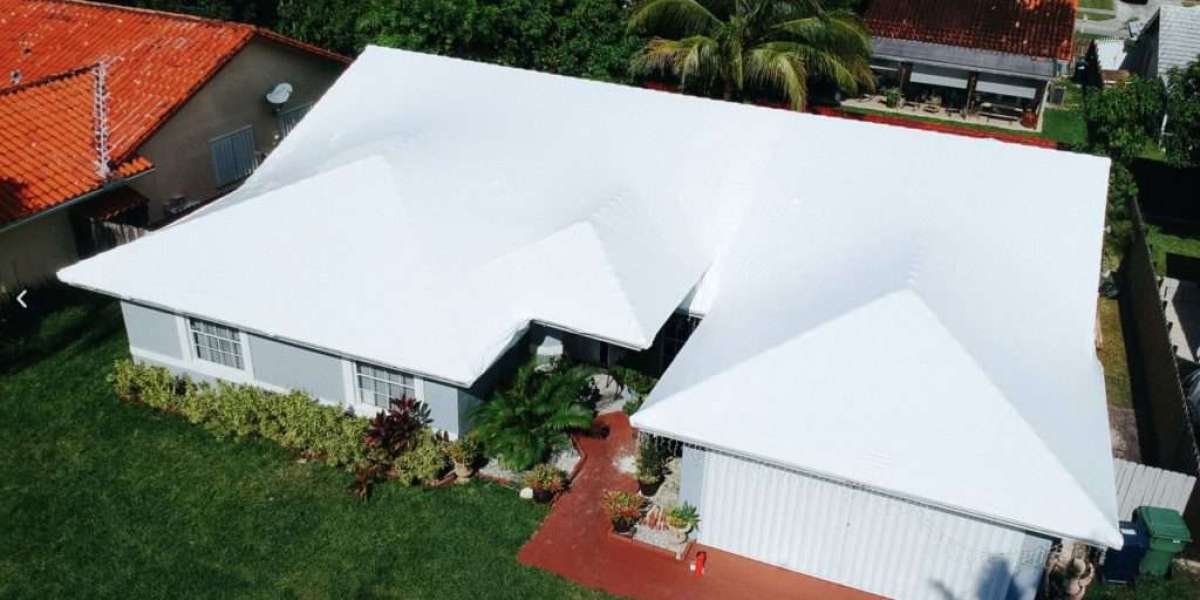In the construction industry, protecting construction sites from the elements is paramount to ensuring the success of projects. Traditional enclosures, such as scaffolding and tarpaulins, have long been the go-to solution for weather protection. However, in recent years, shrink wrap has emerged as a viable alternative, offering a range of benefits. This comprehensive comparison will delve into the cost-effectiveness of shrink wrap versus traditional enclosures in construction, analyzing factors such as material costs, labor requirements, durability, and overall project efficiency.
Traditional Enclosures: A Historical Perspective
- Scaffolding and Tarpaulins
1.1 Scaffolding
Scaffolding has been a staple in construction for centuries, providing a platform for workers and a framework for enclosing structures. While effective, scaffolding is labor-intensive to set up and dismantle, often requiring skilled personnel for installation.
1.2 Tarpaulins
Tarpaulins, made of materials like canvas or polyethylene, have been used for site enclosures due to their affordability. However, they are susceptible to wear and tear, have a limited lifespan, and may not provide sufficient protection against adverse weather conditions.
Shrink Wrap: The Modern Alternative
- Material Costs
1.1 Initial Investment
Shrink wrap typically involves a higher upfront cost compared to traditional materials. The specialized nature of shrink wrap and the equipment required for installation contribute to this initial expense.
1.2 Long-Term Investment
While traditional materials may seem more cost-effective initially, shrink wrap often proves to be a more economical long-term investment. The durability and reusability of shrink wrap can result in lower overall costs over the life of a construction project.
- Labor Requirements
2.1 Installation
Installing shrink wrap requires specialized training, and professionals are often hired for the job. While this may incur additional labor costs, it ensures a precise and efficient installation, minimizing the potential for errors.
2.2 Dismantling
Shrink wrap removal is typically faster and more straightforward than dismantling traditional enclosures. This efficiency can result in cost savings in terms of labor hours required for the deconstruction phase of a project.
- Durability and Weather Resistance
3.1 Longevity
Shrink wrap is known for its durability, capable of withstanding harsh weather conditions, including wind, rain, and snow. Traditional materials, such as tarps, may degrade over time, necessitating frequent replacements.
3.2 Adverse Weather Performance
Shrink wrap's tight seal provides superior protection against adverse weather. Traditional enclosures may be prone to leaks, sagging, or damage in extreme conditions, compromising the integrity of the construction site.
- Flexibility and Adaptability
4.1 Site Configurations
Shrink wrap offers a high degree of flexibility, conforming to various site configurations and shapes. This adaptability reduces the need for custom solutions and allows for efficient coverage of irregular structures.
4.2 Adjustability
During construction, adjustments to the enclosure may be required. Shrink wrap allows for easy modifications without the need for extensive reconfiguration, providing a dynamic and responsive solution.
- Project Efficiency
5.1 Time Savings
Shrink wrap installation is often quicker than setting up traditional enclosures like scaffolding. The time saved during the installation and removal phases contributes to overall project efficiency.
5.2 Uninterrupted Work
The tight and weather-resistant seal of shrink wrap enables construction activities to continue unabated, even in inclement weather. Traditional enclosures may lead to project delays due to weather-related interruptions.
- Environmental Impact
6.1 Reusability and Recycling
Shrink wrap is often reusable and recyclable, contributing to sustainable construction practices. Traditional materials, especially those with a short lifespan, can result in increased waste and environmental impact.
6.2 Eco-Friendly Practices
The use of shrink wrap aligns with a growing emphasis on eco-friendly construction practices. The material's recyclability and reusability make it an environmentally responsible choice compared to traditional materials that may contribute to landfill waste.
Case Studies: Shrink Wrap vs. Traditional Enclosures
- High-Rise Construction Project
1.1 Traditional Enclosure
In a high-rise construction project, traditional scaffolding was employed for exterior work. The setup and dismantling of scaffolding were time-consuming, leading to project delays during adverse weather conditions.
1.2 Shrink Wrap Solution
In a similar project, shrink wrap was used to encapsulate sections of the high-rise. The rapid installation and weather resistance of shrink wrap allowed construction activities to proceed without interruption, resulting in faster project completion.
- Bridge Restoration
2.1 Traditional Enclosure
Tarps were used to enclose a bridge during restoration. However, frequent tearing and sagging of the tarps led to the need for constant adjustments and replacements, increasing labor costs.
2.2 Shrink Wrap Solution
Shrink wrap was utilized in the restoration of another bridge. The durable and weather-resistant nature of shrink wrap eliminated the need for constant adjustments, reducing labor requirements and material costs over the project's duration.
Conclusion
In the ongoing debate between shrink wrap and traditional enclosures in construction, a nuanced understanding of their respective costs and benefits is crucial. While traditional enclosures may appear more cost-effective in the short term, factors such as material longevity, labor efficiency, and project continuity contribute to the overall cost-effectiveness of shrink wrap.
Shrink wrap's initial investment may be higher, but its durability, weather resistance, and adaptability often result in long-term savings. Moreover, the environmental considerations, including recyclability and reusability, position shrink wrap as a sustainable choice in an industry increasingly focused on eco-friendly practices.
Ultimately, the choice between shrink wrap and traditional enclosures depends on the specific needs of a construction project. However, as the construction industry evolves towards efficiency, sustainability, and resilience, the cost-effectiveness of shrink wrap becomes increasingly evident, making it a compelling choice for forward-thinking construction projects.
Training Your Team for Safe Net Installation and Use
Safeguarding Your Business: Insurance and Industrial Safety Nets



